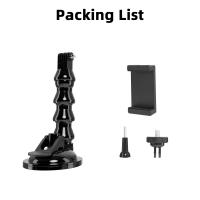How To Wire Speakers?
Wiring speakers can seem like a daunting task, especially for those who are new to audio systems or DIY electronics. However, with a bit of knowledge and the right tools, it can be a straightforward process. This article will guide you through the essential steps and considerations for wiring speakers, ensuring you achieve optimal sound quality and system performance.
Understanding the Basics
Before diving into the wiring process, it's crucial to understand some basic concepts:
1. Speaker Impedance: Measured in ohms, impedance affects how much power the speaker draws from the amplifier. Common impedances are 4, 6, and 8 ohms. Ensure your amplifier can handle the impedance of your speakers.
2. Speaker Wire Gauge: The thickness of the wire, measured in gauge, affects the quality of the sound. Thicker wires (lower gauge numbers) are better for longer distances. For most home audio systems, 16-gauge wire is sufficient, but for longer runs, 14-gauge or 12-gauge wire is recommended.
3. Polarity: Speakers have positive (+) and negative (-) terminals. Maintaining correct polarity ensures that the speakers are in phase, which is crucial for sound quality.
Tools and Materials Needed
- Speaker wire (appropriate gauge)
- Wire cutters/strippers
- Soldering iron and solder (optional)
- Electrical tape or heat shrink tubing
- Banana plugs, spade connectors, or bare wire (depending on your preference and equipment)
Step-by-Step Guide to Wiring Speakers
Step 1: Plan Your Setup
Determine the layout of your speakers and the length of wire needed for each connection. Measure the distances and add a little extra length to account for any obstacles or routing paths.
Step 2: Cut and Strip the Wire
Cut the speaker wire to the required lengths. Use wire strippers to remove about half an inch of insulation from both ends of each wire. Be careful not to nick the wire strands, as this can weaken the connection.
Step 3: Connect the Wire to the Speakers
Identify the positive and negative terminals on your speakers. The positive terminal is usually marked with a red color or a "+" symbol, while the negative terminal is marked with black or a "-" symbol.
- Bare Wire Connection: Twist the exposed wire strands tightly and insert them into the corresponding terminals. Tighten the terminal screws to secure the wire.
- Banana Plugs/Spade Connectors: Attach the connectors to the stripped wire ends. Insert the banana plugs into the speaker terminals or secure the spade connectors under the terminal screws.
Step 4: Connect the Wire to the Amplifier/Receiver
Repeat the process for the amplifier or receiver. Ensure that the positive wire from the speaker connects to the positive terminal on the amplifier, and the negative wire connects to the negative terminal.
Step 5: Test the Connections
Once all the connections are made, power on your amplifier or receiver and play some audio. Listen for any distortions or issues. If everything sounds good, you have successfully wired your speakers.
Advanced Considerations
Bi-Wiring and Bi-Amping
Some high-end speakers and audio systems support bi-wiring or bi-amping, which can improve sound quality.
- Bi-Wiring: This involves running two sets of wires from the amplifier to the speaker, one for the high frequencies and one for the low frequencies. This can reduce interference and improve clarity.
- Bi-Amping: This involves using two amplifiers, one for the high frequencies and one for the low frequencies. This can provide more power and better control over the speaker drivers.
Series and Parallel Wiring
If you have multiple speakers, you may need to wire them in series or parallel to match the impedance requirements of your amplifier.
- Series Wiring: Connect the positive terminal of the amplifier to the positive terminal of the first speaker. Then, connect the negative terminal of the first speaker to the positive terminal of the second speaker, and so on. Finally, connect the negative terminal of the last speaker to the negative terminal of the amplifier. This increases the total impedance.
- Parallel Wiring: Connect all the positive terminals of the speakers to the positive terminal of the amplifier, and all the negative terminals of the speakers to the negative terminal of the amplifier. This decreases the total impedance.
Troubleshooting Common Issues
No Sound or Distorted Sound
- Check Connections: Ensure all wires are securely connected and that there are no loose strands causing a short circuit.
- Polarity: Verify that the polarity is correct for all connections.
- Impedance: Ensure the total impedance of the speakers matches the amplifier's specifications.
Humming or Buzzing Noise
- Ground Loop: This can occur if there are multiple grounding points. Use a ground loop isolator to resolve this issue.
- Interference: Keep speaker wires away from power cables and other sources of electromagnetic interference.
Wiring speakers is a fundamental skill for anyone interested in audio systems, whether for home theater, car audio, or professional setups. By understanding the basics of speaker impedance, wire gauge, and polarity, and following a systematic approach, you can ensure a high-quality audio experience. Advanced techniques like bi-wiring, bi-amping, and series/parallel wiring offer further customization for audiophiles seeking the best possible sound. With the right tools and a bit of patience, you can master the art of wiring speakers and enjoy the rich, immersive sound that a well-wired system provides.

















There are no comments for this blog.